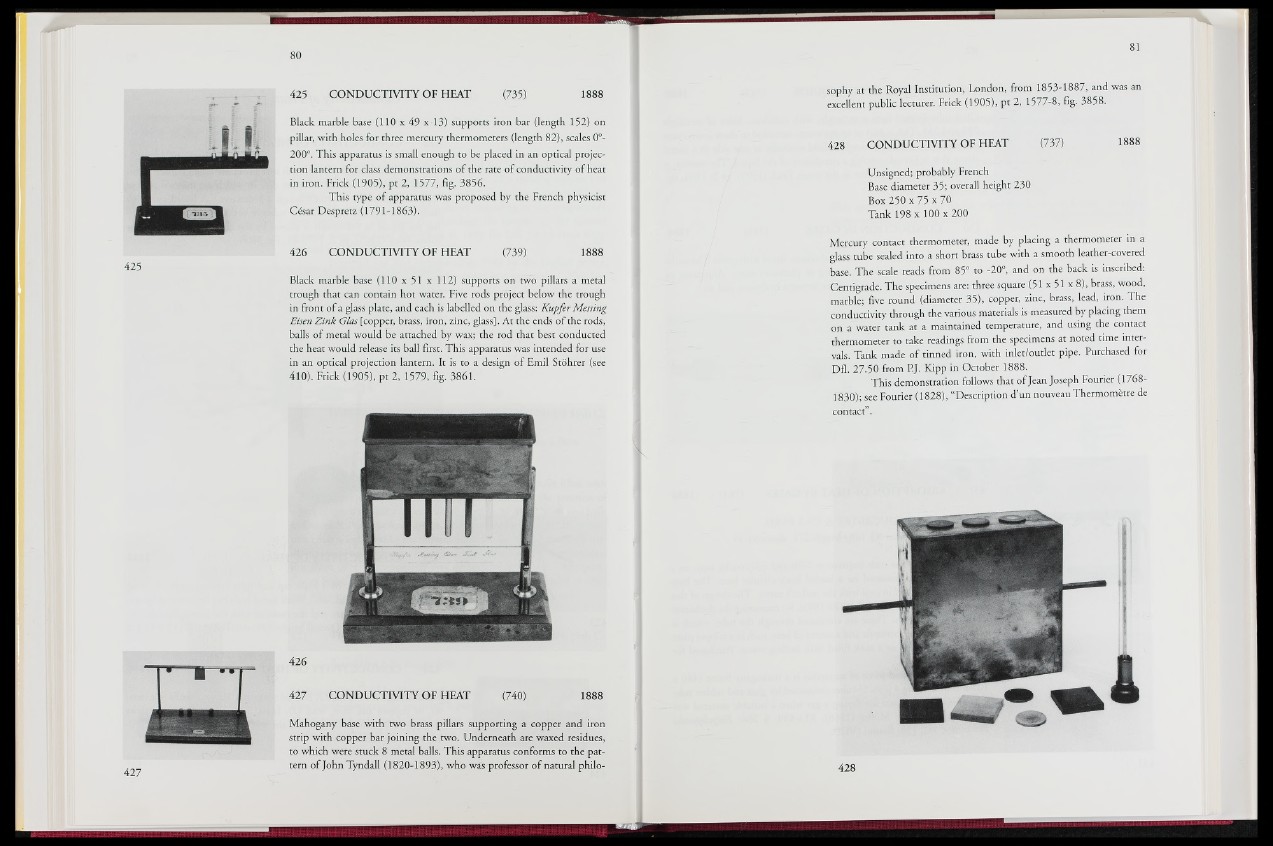
425 CONDUCTIVITY OF HEAT (735) 1888
425
Black marble base (110 x 49 x 13) supports iron bar (length 152) on
pillar, with holes for three mercury thermometers (length 82), scales 0°-
200°. This apparatus is small enough to be placed in an optical projection
lantern for class demonstrations of the rate of conductivity of heat
in iron. Frick (1905), pt 2, 1577, fig- 3856.
This type of apparatus was proposed by the French physicist
César Despretz (1791-1863).
426 CONDUCTIVITY OF HEAT (739) 1888
Black marble base (110 x 51 x 112)' supports on two pillars a metal
trough that can contain hot water, hive rods project below the trough
in front of a glass plate, and each is labelled on the glass: Kupfer Messing
Eisen Zink Glas [copper, brass, iron, zinc, glass]. At the ends of the rods,
balls of metal would be attached by wax; the rod that best conducted
the heat would release its ball first. This apparatus was intended for use
in an optical projection lantern. It is to a design of Emil Stohrer (see
410). Frick (1905), pt 2, 1579, fig. 3861.
426
427 CONDUCTIVITY OF HEAT (740) 1888
Mahogany base with two brass pillars supporting a copper and iron
strip with copper bar joining the two. Underneath are waxed residues,
to which were stuck 8 metal balls. This apparatus conforms to the pattern
of John Tyndall (1820-1893), who was professor of natural philosophy
at the Royal Institution, London, from 1853-1887, and was an
excellent public lecturer. Frick (1905), pt 2, 1577-8, fig. 3858.
428 CONDUCTIVITY OF HEAT (737) 1888
Unsigned; probably French
Base diameter 35; overall height 230
Box 250 x 75 x 70
Tank 198 x 100 x 200
Mercury contact thermometer, made by placing a thermometer in a
glass tube sealed into a short brass tube with a smooth leather-covered
base. The scale reads from 85° to -20°, and on the back is inscribed.
Centigrade. The specimens are: three square (5 1 x 5 1 x 8 ), brass, wood,
marble; five round (diameter 35), copper, zinc, brass, lead, iron. The
conductivity through the various materials is measured by placing them
on a water tank at a maintained temperature, and using the contact
thermometer to take readings from the specimens at noted time intervals.
Tank made of tinned iron, with inlet/outlet pipe. Purchased for
Dfl. 27.50 from f j . Kipp in October 1888.
This demonstration follows that of Jean Joseph Fourier (1768-
1830); see Fourier (1828), “Description d’un nouveau Thermomètre de
contact”.